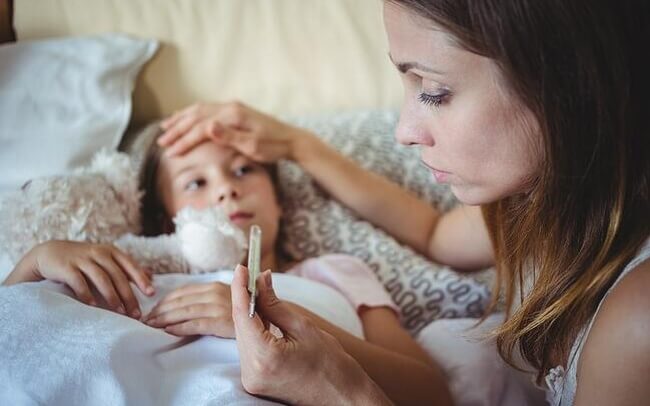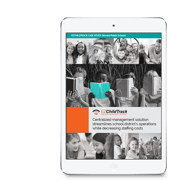
It may seem an impossible task to have a germ-free classroom in your childcare center, but for everyone's sake from the staff to the children, you have to try. Cold and flu season peaks in the winter but kids have the sniffles and other problems year around.
How can you minimize the misery? Follow these stops and find out how childcare management software can help.
Clean Air
The air everyone breathes is an excellent vector for illness, but you may be able to mitigate some of the particulates that float through the air.
- Install air filters in the heating and air conditioning ducts that remove pollen, dust, animal dander, and bacteria.
- Open a window or door part of the day, even in the colder months.
- Eliminate carpeting and other materials that can store particulates.
HEPA (high-efficiency particulate-arresting) filters are available in most stores and remove close to 100% of pollen and other materials. Fresh, clean air helps everyone feel more awake. Keep the air circulating to carry out dirt and germs.
Handwashing
Handwashing is the lynch-pin in flu prevention, and it keeps other viruses and bacteria at bay.
Children should wash…
- Upon arrival at school
- Before and after meals, snacks, and food-related activities
- After playing outside
- Before and after playing with art or other sensory materials such as clay
- After toileting
- After sneezing or blowing their nose
- After playing with animals or handling pet supplies
- Anytime their hands look dirty
Staff should wash…
- For the same reasons the children wash
- Before and after diapering or assisting a child with toileting
- Before and after handling food or bottles
- Before and after giving medication or performing medical procedures and first aid
- After wiping noses
- After cleaning up spills and other messes
Also, make sure you have a written hand-washing policy and keep all sinks clean. Use paper towels rather than fabric and encourage everyone to wash their hands frequently.
Cleaning and Sanitizing Your Childcare Facility
Cleaning and sanitizing are two different activities. Cleaning removes dirt and can make surfaces appear clean but most cleaning liquids don’t kill or remove germs effectively. Sanitizing is the process that follows cleaning to remove bacteria, viruses, and other germs with a disinfectant. One tablespoon of bleach per quart of water provides an effective solution that kills germs.
Clean surfaces and plastic toys of dirt and grime then wipe with the bleach solution. Allow everything to air dry. Using a towel to dry after sanitizing will simply re-infect the surface. Fresh bleach solution should be made every day and kept out of the reach of children.
Other items that need cleaning and disinfecting include doorknobs, computer keyboards and mice, light switches, and handles. Bacteria such as E. Coli, Klebsiella, Salmonella, Staphylococcus aureus, and Streptococcus are often found on desks and computer equipment. All cause intestinal and respiratory illness. S. Aureus is a major cause of sepsis in wounds.
Limit Sharing Supplies
Childcare and preschool would not be the same without crayons, markers, scissors, and clay. Unfortunately, these items are also handy surfaces for germs to dwell and they aren’t as easy to clean. When you consider that small children tend to put such things in their mouths (and sometimes up noses), developing a way to limit sharing makes sense.
A great solution is for each child to have his or her own supplies in a labeled box. Placing the supplies in a box makes storage easy and keeps everyone from sharing germs along with the crayons and pencils. If you have a community pencil sharpener, it should be disinfected as well. It may be a better idea for each child to have a small sharpener of their own at the appropriate age.
Take Care of Personal Supplies
Each child has items that belong only to them and may travel back and forth from home.
- Backpacks and purses should be hung up rather than placed on the floor.
- Tissues can be part of the classroom supplies or sent from home. Make sure everyone knows to grab one to contain sneezes and coughs. Used tissues should go into the trash immediately, and the user must wash hands.
- If reaching a tissue is not possible, have everyone sneeze or cough into the crook of their elbows rather than into their hands.
- Virucidal tissues are now available that may limit the spread of colds and flu.
Children should also avoid sharing combs, cups, eating utensils, food, or drink.
Take Out the Trash
All tissues, disposable eating utensils, and left-over food should be placed in the trash or garbage. Diapers should be placed in a separate pail. All trash and garbage should be removed when the container is full and at the end of the day.
Learn to Recognize the Symptoms of Illness
You should have a written policy letting parents know when their children should be kept at home or when they may be sent home. An essential part of your policy includes clear instructions on when the child may begin attending school again.
- When the child cannot take part in activities comfortably
- When the child needs more care than you or your staff can provide without causing others to become ill
- When the child has an illness listed for exclusion
States may have mandatory rules to follow when a child has a fever or has been diagnosed with a specific illness such as the flu. A general rule of thumb is to exclude a child until he or she has been fever-free without the use of fever-reducing medication for 24 hours.
You may wish to require a physician’s note to allow a child to come back to school.
Track Immunizations with Childcare Management Software
Beyond colds and the flu, if you require immunizations to common childhood diseases as part of the entrance requirements, you can remind parents when immunizations are about to expire and send other information from a childcare management solution. Each child should have an immunization record placed in the system. When a due date for a vaccination approaches, the system will notify you and your staff as well as the parents to make the appointment.
Remind parents that immunizations keep everyone healthy, including people who cannot receive vaccinations or other medications.
Partner with your parents to teach the children the rudiments of good hygiene, modeling handwashing behavior and providing personal items from home such as tissues. Set a schedule for cleaning and disinfecting toys, desks, tables, and other surfaces to reduce the chance a child will become ill and pass it around.




